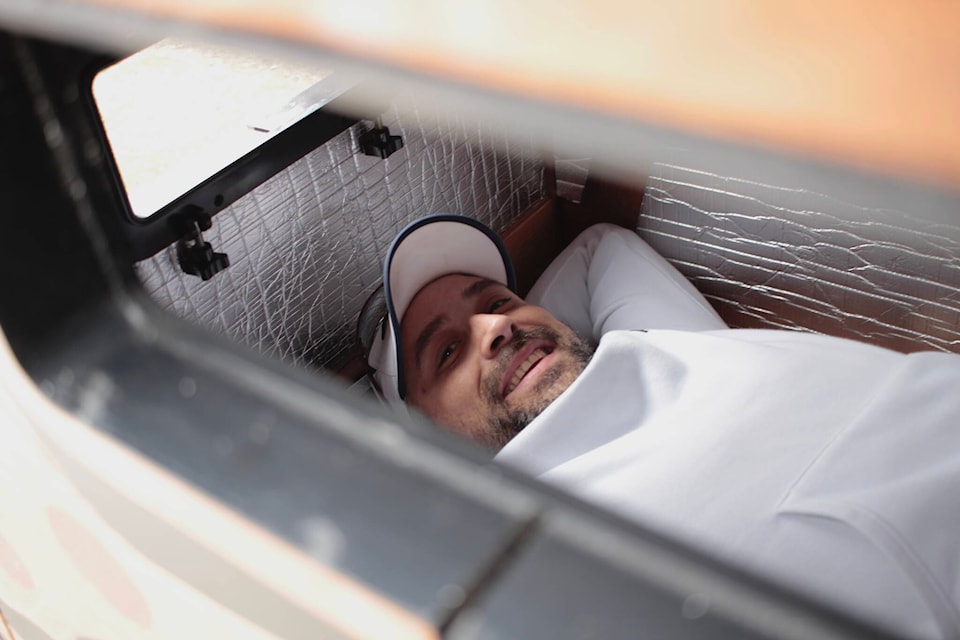The tiniest of efforts could soon be making a huge difference for those experiencing homelessness in at least one B.C. community.
Last week, poverty advocates in Campbell River unveiled the first prototype of a new portable, wooden tiny home pod. As designed by Shawn Decaire of the warming centre Kwesa Place, the pods can be transported like a wheelbarrow during the day, giving people a lockable space to store their belongings. Then, at night, people using the pods can extend a section out, providing just enough room to lay down and sleep.
“This is the first one, we’ll be making a second prototype,” said Sharon Karsten, executive director of the co-sponsoring drug crisis response group Walk With Me, who was seeing the pod for the first time.
“We’d like to get 30 going by the fall if we can. We’d like to have a production house in some way where people are making and assembling them. They’ll be able to paint them, make them their own and make them beautiful.”
The idea for the pods came from discussions with the unhoused community, who told Walk With Me and Kwesa Place representatives that “there’s a long list of things that have been thrown at people at night as they were sleeping,” Karsten said.
“From bottles, to eggs, to whatever; it was an endless list,” she said.
The Campbell River and District Coalition to End Homelessness is supporting the project. In an email, the Coalition said “the potential of this concept to provide both a space to keep people up off the ground as well as to replace the use of some carts is really exciting.
“Combining that with local Indigenous hand-painted art makes for a creative solution to multiple concerns…We look forward to seeing how this project unfolds over the coming months and hope that we can bring the community together to discuss how to make this successful for Campbell River.”
The hard shell of the wooden pod will offer some protection for those inside. There is also fire resistant insulation in the design as well as windows that can be opened and closed from the inside. The pods are also lockable from both the inside and outside, which will offer protection to those inside overnight, and protection for their belongings during the day.
“It’s not intended to be the solution in any way,” Karsten said. “It’s a part of a part of a part of housing. We’d like to have this as an emergency middle ground between sleeping in tents — if people want it.”
Decaire painted the design on the first prototype, which he called the “Angel Pod” in homage to two community members who passed away earlier this year. The design incorporates the sea trout motif, which Decaire said was “one of those creatures that’s always evolved through evolution. In the seas, all of the animals lived on it, so it’s part of every animal. It’s part of the birds, part of the whales, the bears.”
The idea is to have the 30 units built by the fall.
RELATED:
marc.kitteringham@campbellrivermirror.com
Like us on and follow us on



